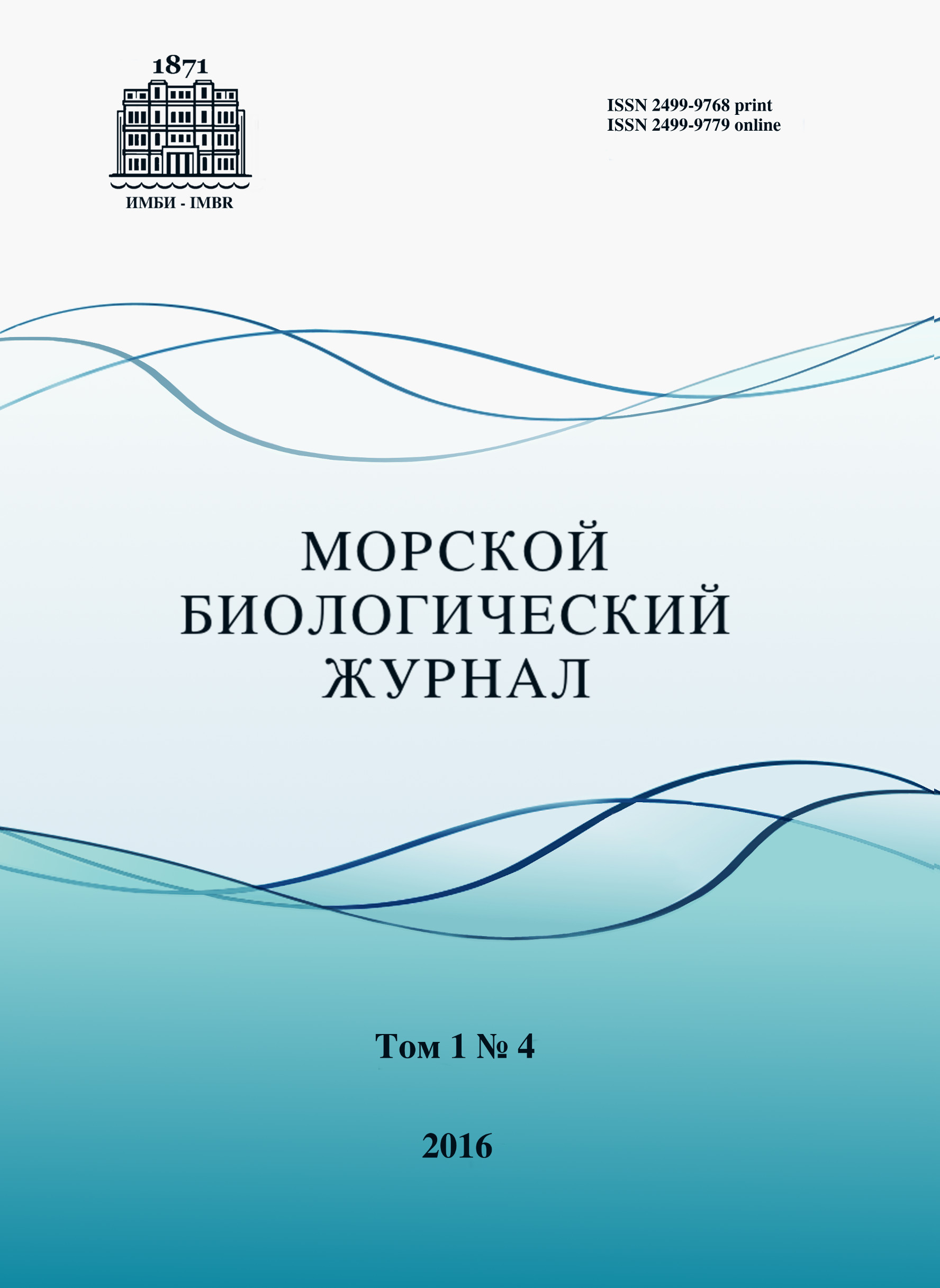First record of Pseudodiaptomus marinus (Copepoda: Calanoida: Pseudodiaptomidae) in the Black Sea (Sevastopol Bay)
##plugins.themes.ibsscustom.article.main##
##plugins.themes.ibsscustom.article.details##
Abstract
Pseudodiaptomus marinus was initially discovered at the end of September 2016 in a sample taken during a long-term plankton survey of Sevastopol Bay started in 2002. We found 6 females and 12 copepodites (I-V stages) of P. marinus at the center of Sevastopol Bay (St. 3) on September 22. At the mouth of Bay (St. 2) the species was not found. Both females and copepodite stages I-V of P. marinus were found at the both stations on November 11. Abundance of P. marinus increased to 1236 individuals in sample (1373 ind/m3) at the center of the bay. Moreover, two individuals of P. marinus nauplii identified by Sazhina, were found in this sample. At the mouth of the bay abundance of the invasive species reached 103 individuals in sample (103 ind/m3). It is considered to be native to the Northwestern Pacific Ocean, but now species is widespread across the world. Brilinski described in details its distribution in the World's oceans. Recently P. marinus has been found in the Atlantic Ocean in the North Sea and in the Mediterranean Sea. P. marinus is a typical estuarine coastal copepod, living in shallow eutrophic inshore waters. It is tolerant to a wide range of salinity (2.5-35 ptt) and temperature (5-28 ºC) and has the highest invasive potential. Thus species is adapted to relatively low salinities and low winter temperatures of the Black Sea. Copepodite stages at both stations indicate the existence of reproducing populations. Thus, very likely P. marinus is the new established species in coastal area of the Black Sea. As other recent pelagic invaders – the copepods Acartia tonsa Dana 1849, Oithona davisae Ferrari F. D. & Orsi 1984; ctenophores Mnemiopsis leidyi A. Agassiz, 1865 and Beroe ovata Bruguiere, 1789 - P. marinus was most probably brought into Sevastopol Bay in the ballast water of ships. Long-term studies at basin scale are needed to estimate the structural changes in the Black Sea zooplankton community.
Authors
References
Walter T. C. Review of the taxonomy and distribution of the demersal copepod genus Pseudodiaptomus (Calanoida: Pseudodiaptomidae) from southern Indo-west Pacific waters. Australian Journal of Marine and Freshwater Research, 1987, vol. 38, no. 3, pp. 363–396. doi.org/10.1071/MF9870363
Brylinski J. M., Antajan E., Raud T., Vincent D. First record of the Asian copepod Pseudodiaptomus marinus Sato, 1913 (Copepoda: Calanoida: Pseudodiaptomidae) in the southern bight of the North Sea along the coast of France. Aquat Invasions, 2012, vol. 7, no. 4, pp. 577–584.
Sabia L., Uttieri M., Schmitt F. G., Zagami G., Zambianchi E., Souissi S. Pseudodiaptomus marinus Sato, 1913, a new invasive copepod in Lake Faro (Sicily): observations on the swimming behaviour and the sex-dependent responses to food. Zoological Studies, 2014, vol. 53, no. 49, pp. 1-12. doi:10.1186/s40555-014- 0049-8
Sabia L., Zagami G., Mazzocchi M. G., Zambianchi E., Uttieri M. Spreading factors of a globally invading coastal copepod. Mediterranian Marine Science, 2015, vol. 16, no. 2, pp. 460–471. doi:10.12681/mms.1154
Lučić D., Mozeič P., France J., Lucic P., Lipej L. Additional record of the non-indigenous copepod Pseudodiaptomus marinus (Sato, 1913) in the Adriatic Sea. Acta Adriatica, 2015, vol. 56, no. 2, pp. 275–282.
Sazhina L. I. Naupliusy massovyh vidov pelagicheskih kopepod Mirovogo okeana. Kiev: Naukova dumka, 1985, 240 p. (in Russ.)
Svetlichny L., Hubareva E., Khanaychenko A., Gubanova A., Altukhov D., Besiktepe S. Adaptive Strategy of Thermophilic Oithona davisae in the Cold Black Sea Environment. Turkish Journal of Fisheries and Aquatic Sciences, 2016, vol. 16, iss. 1, pp. 77–90. 10.4194/1303-2712-v16_1_09
Arias A., Souissi A., Roussin M., Ouddane B. Bioaccumulation of PAHs in marine zooplankton: an experimental study in the copepod Pseudodiaptomus marinus. Environmental Earth Sciences, 2016, vol. 75 no. 8, pp. 691–691.


 Google Scholar
Google Scholar



